Discover Italy’s enchanting urban landscapes, the most beautiful cities in Italy, that seamlessly blend historic grandeur and contemporary charm. This journey through Italy’s most beautiful cities showcases architectural wonders, rich cultural heritage, and stunning natural settings. Each city is a unique tapestry of stories and beauty, revealing the heart of Italian artistry and history. Join us in exploring these remarkable destinations, where every street and skyline tells a captivating tale.
Please note population numbers given in this article are generally based on the urban city population and not the wider metropolitan population, and are, of course, only approximate.
This post may contain affiliate links to things like hotels, tours or products. These help us earn a small commission at no additional charge to you and help keep the lights on at Destination Someplace.
Rome: A Timeless Fusion of History and Modernity
First on our list of the most beautiful cities in Italy is Rome, aptly named the Eternal City, which stands as a living museum, rich in historical significance and ancient origins. The birthplace of an empire that shaped the Western world, its streets and structures narrate stories of ancient times. Iconic landmarks like the majestic Colosseum evoke the glory of ancient Rome, while the Roman Forum whispers tales of a bygone era of power and prestige.
The Vatican City, a sovereign state within Rome, is a treasure trove of religious and artistic heritage, home to the awe-inspiring St. Peter’s Basilica and the Vatican Museums. Amidst these historical marvels, Rome seamlessly blends the ancient with the modern, creating a unique urban tapestry. Contemporary life buzzes through its ancient streets, where history is not just remembered but vividly alive. This juxtaposition makes Rome a captivating destination, a city where the past and present coexist in harmonious splendour.

Rome: Quick Facts
Name in Italian: Roma
Approximate Population: 2.8 million
Main Airport(s): Leonardo da Vinci Airport (Fiumicino Airport) and Ciampino Airport.
Urban Transport: Trams, metro, buses and urban railways.
Venice: A Serene Symphony of Waterways and Wonders
Venice, often hailed as the City of Canals, is an enchanting maze of waterways and winding alleys, creating a romantic and surreal atmosphere unique in the world. This floating city is crisscrossed by its iconic canals, where gondolas glide gracefully, carrying echoes of serenades past grand palazzos and under historic bridges.
The architectural grandeur of Venice is epitomized in landmarks like St. Mark’s Basilica, a masterpiece of Byzantine art, and the Doge’s Palace, a symbol of Venice’s golden age of power and artistry. These structures not only display Venice’s rich architectural heritage but also tell tales of its illustrious past.
The city is also a vibrant hub of cultural activities, with events like the world-renowned Venice Carnival, an explosion of masks, costumes, and age-old traditions. Meanwhile, the Venice Biennale stands as a global pinnacle of contemporary art and culture, drawing artists and enthusiasts from around the world. In Venice, every canal and cobblestone street resonates with a history of artistic and cultural splendour, making it a timeless jewel amidst Italy’s crown of cities.
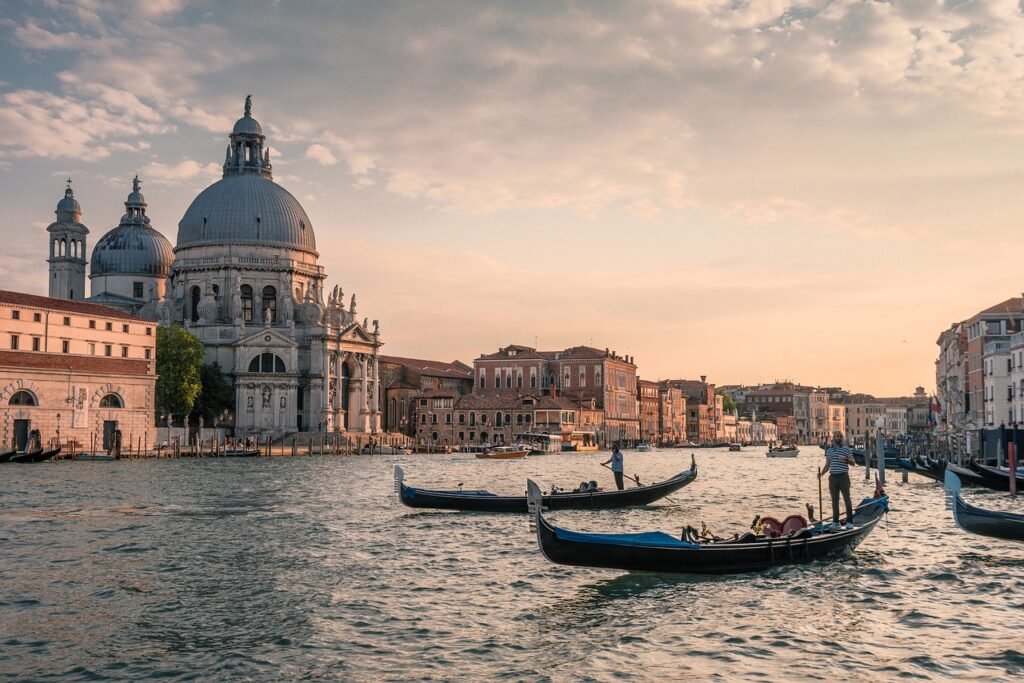
Venice: Quick Facts
Name in Italian: Venezia
Approximate Population: 258,051
Main Airport(s): Venice Marco Polo Airport and further afield, Treviso Airport.
Urban Transport: Water bus, water taxis, gondola, traghetti/Ferries, bus (for transport into/out of Venice).
Florence: A Renaissance Masterpiece of Art and Architecture
Florence, the Cradle of the Renaissance, is a testament to the era when art and human creativity reached unparalleled heights. The city is a living gallery, boasting an array of Renaissance art and architecture that has left an indelible mark on the world. Here, every street and piazza tells a story of innovation and artistic genius. The Uffizi Gallery houses a collection of masterpieces unrivalled in its breadth and beauty, showcasing works by titans like Michelangelo and Leonardo da Vinci.
The Florence Cathedral, with its iconic red-tiled dome engineered by Brunelleschi, dominates the city’s skyline, a marvel of architectural ingenuity. The Ponte Vecchio, a medieval stone bridge adorned with jewellery shops, spans the Arno River, symbolizing the blend of commerce and artistry intrinsic to Florence’s spirit. The city’s influence extends far beyond its borders, having ignited a cultural revolution that redefined art, culture, and history during the Renaissance. Florence’s legacy is felt in every aspect of modern aesthetics, making it a pivotal destination for those seeking to understand the roots of Western art and culture. This is why it makes it onto our list of the most beautiful cities in Italy.
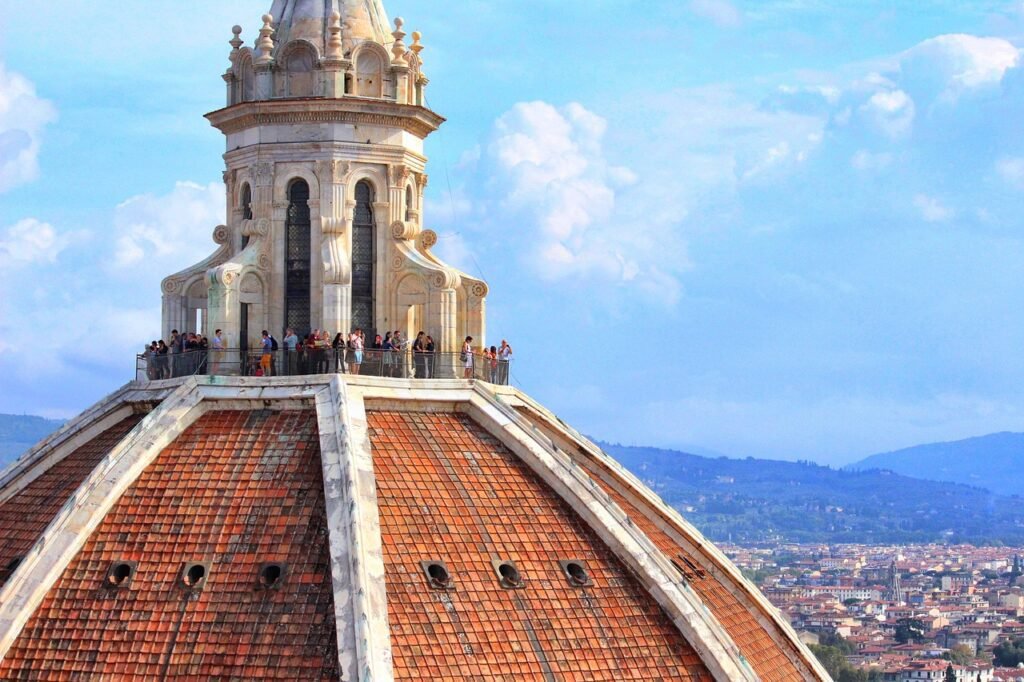
Florence: Quick Facts
Name in Italian: Firenze
Approximate Population: 380,000
Main Airport(s): Florence Airport, formally Amerigo Vespucci Airport.
Urban Transport: Buses, trams and taxis.
Need Flights?
Milan: The Pinnacle of Fashion and Architectural Majesty
Milan, celebrated as the Fashion Capital of the world, stands at the forefront of global fashion and design, shaping trends and styles that resonate across continents.
This dynamic city is not only a powerhouse in the fashion industry but also a beacon of modern design and creativity. Its influence in fashion is paralleled by its architectural marvels, such as the Milan Cathedral, a magnificent example of Gothic architecture that took nearly six centuries to complete. The cathedral’s spires and intricate facades are a testament to Milan’s dedication to beauty and artistry.
Equally impressive is the Sforza Castle, a symbol of Milan’s rich history and a repository of art and culture.
Beyond fashion and architecture, Milan is a vital cog in Italy’s economic engine, driving innovation and progress. Its cultural impact is profound, hosting prestigious events like Milan Fashion Week and the Milan Furniture Fair, which draw global attention. In Milan, the blend of high fashion, cutting-edge design, and historical depth creates an urban tapestry that is both vibrant and culturally rich, embodying the essence of Italian sophistication and creativity.
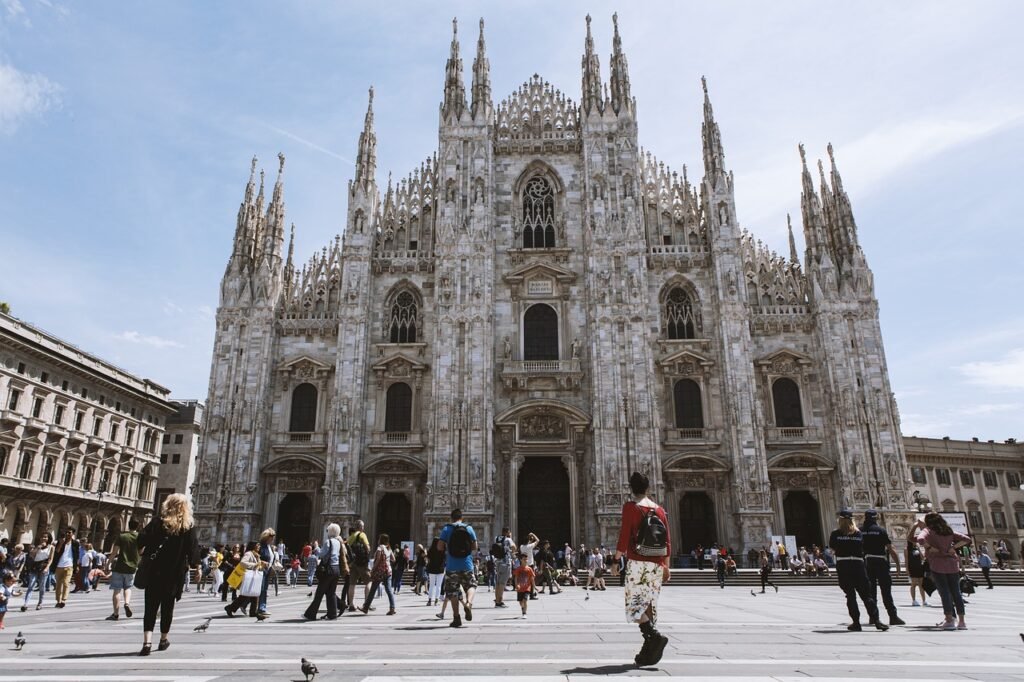
Milan: Quick Facts
Name in Italian: Milano
Approximate Population: 1.3 million
Main Airport(s): Malpensa Airport or Bergamo Orio al Serio Airport (also known as Caravaggio International Airport.
Urban Transport: Subway, bus, taxi and tram.
Naples: A Historical and Culinary Jewel of Southern Italy
Naples, often referred to as the Soul of the South, is a city where history and culture converge in a vibrant tapestry that spans from ancient Greek times to the present day. This bustling metropolis is a treasure trove of historical layers, each telling a unique story of the city’s past. Walking through Naples is like traversing through time, with remnants of Greek, Roman, and Renaissance eras etched into its urban fabric.
Naples is also globally celebrated for its culinary contributions, most notably the invention of pizza, which has become a worldwide phenomenon. The city’s culinary scene offers an authentic taste of Italian cuisine, with a focus on fresh, local ingredients and traditional recipes passed down through generations.
Naples’ allure is further enhanced by its proximity to some of Italy’s most iconic landmarks. Just a short journey away lies the ancient city of Pompeii, frozen in time by the eruption of Mount Vesuvius. This nearby volcano, both a symbol of natural beauty and historical tragedy, adds to the region’s mystique.
The combination of rich history, world-famous cuisine, and close proximity to significant archaeological sites makes Naples a unique and compelling destination, reflecting the heart and soul of Southern Italy.

Naples: Quick Facts
Name in Italian: Napoli
Approximate Population: 2.2 million
Main Airport(s): Naples-Capodichino International Airport.
Urban Transport: Bus, tram, Metro, funicular railway and taxi.
Turin: A Blend of Royal Heritage and Cultural Sophistication
Turin, known as The Regal City, boasts a rich history as the first capital of Italy, encapsulating a legacy of elegance and sovereignty. This distinguished city is renowned for its refined Baroque architecture, visible in its grand palaces and squares, which exude a royal charm. The city’s layout, with its wide, tree-lined boulevards and expansive public spaces, reflects its aristocratic past and urban planning finesse.
Turin’s cultural scene is as impressive as its history, home to world-class institutions like the Egyptian Museum, which holds one of the most significant collections of Egyptians artefacts outside of Cairo. Another highlight is the National Cinema Museum, celebrating Turin’s pivotal role in the history of film and providing an immersive experience for cinema enthusiasts.
Turin’s fusion of regal history, architectural splendour, and cultural richness makes it a unique Italian destination. Its elegant streets and celebrated museums offer visitors a glimpse into the city’s former life as the epicentre of Italian royalty and its current status as a hub of cultural and artistic innovation. This combination of historical significance and contemporary cultural appeal solidifies Turin’s reputation as a city of both past grandeur and present-day vibrancy.
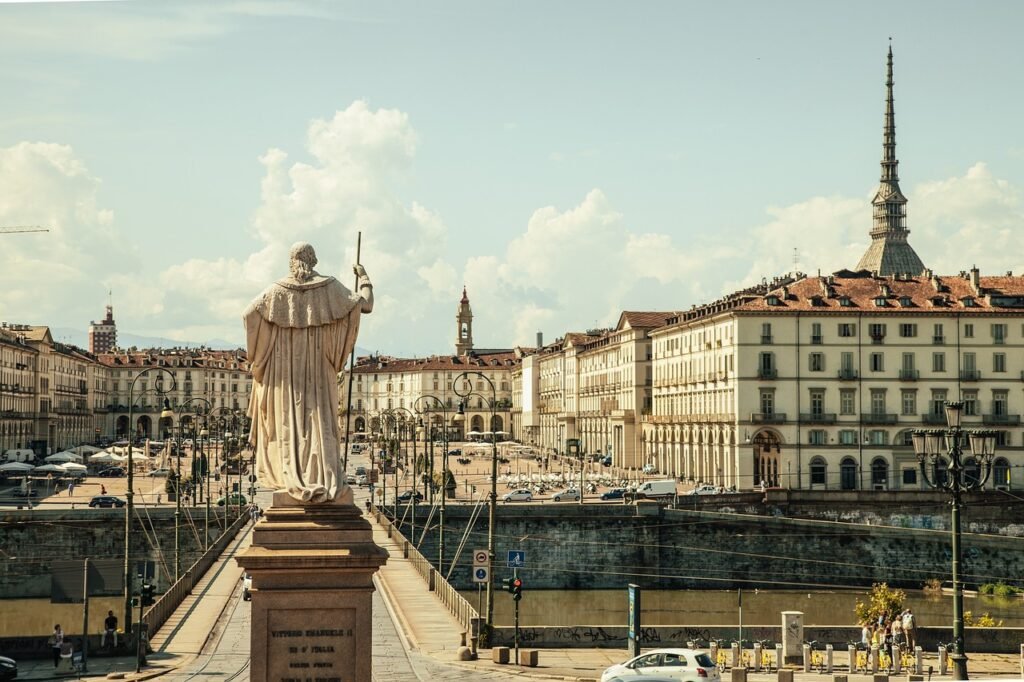
Turin: Quick Facts
Name in Italian: Torino
Approximate Population: 847,287
Main Airport(s): Turin Airport, also known as Turin-Caselle Airport.
Urban Transport: Bus, metro, train, taxi and tram.
USEFUL RESOURCES – ITALY
Accommodation: Booking.com
Activities: Get Your Guide
Flights: Skyscanner
Trains: Rail Europe
Bus: FlixBus
Car Hire: AutoEurope
Verona: A Romantic Tapestry Woven with History and Culture
No list of the most beautiful cities in Italy would be complete without wonderful Verona, immortalized as the City of Romeo and Juliet, it is a place where romance intertwines with a rich Shakespearean legacy. This enchanting city, the setting of one of the most famous love stories in history, captivates visitors with its timeless charm and romantic allure. The story of Romeo and Juliet, although a tale from Shakespeare’s imagination, lives on in Verona’s atmospheric streets and in the hearts of those who visit Juliet’s balcony, a symbol of love and longing.
Beyond its romantic associations, Verona is steeped in history, boasting impressive Roman sites such as the Verona Arena. This ancient amphitheatre, remarkably well-preserved, is a testament to Verona’s historical depth, offering a glimpse into the city’s past as a significant Roman settlement. Today, the Arena comes alive with the Verona Opera Festival, an annual event that transforms the ancient structure into a spectacular venue for world-class opera performances, drawing culture enthusiasts from around the globe.
In Verona, every corner tells a story, blending the romantic with the historical. Whether it’s walking through the streets that inspired Shakespeare, marvelling at Roman architecture, or experiencing the city’s vibrant cultural events, Verona offers a unique journey through a landscape where history, romance, and culture converge in a captivating symphony.

Verona: Quick Facts
Name in Italian: Verona
Approximate Population: 255,588
Main Airport(s): Valerio Catullo Airport, (also known as Verona Villafranca), and Verona Brescia Airport.
Urban Transport: Bus and taxi.
Bologna: A Fusion of Academic Legacy and Cultural Richness
Bologna, often referred to as The Learned City, is renowned for housing the oldest university in the world, the University of Bologna, established in 1088. This historic institution has made the city a longstanding hub of academic excellence and intellectual pursuit. The presence of the university has infused Bologna with a youthful and vibrant energy, contributing to its dynamic cultural scene.
The city’s medieval architecture is another of its defining features, with a well-preserved historic centre that takes visitors back in time. The streets of Bologna are lined with elegant medieval buildings, porticoes, and squares, offering a picturesque backdrop that encapsulates the city’s rich history. The Two Towers, Asinelli and Garisenda, are among the most iconic symbols of the city, leaning over Bologna’s skyline as reminders of its medieval past.
Bologna is also celebrated for its exceptional cuisine, often considered the culinary heart of Italy. Known for dishes like tagliatelle al ragù (Bolognese sauce) and tortellini, the city offers a gastronomic experience that is both deeply rooted in tradition and bursting with flavour. The combination of its esteemed academic history, stunning medieval architecture, and renowned culinary tradition makes Bologna a unique and compelling destination, embodying the essence of Italian culture and heritage.
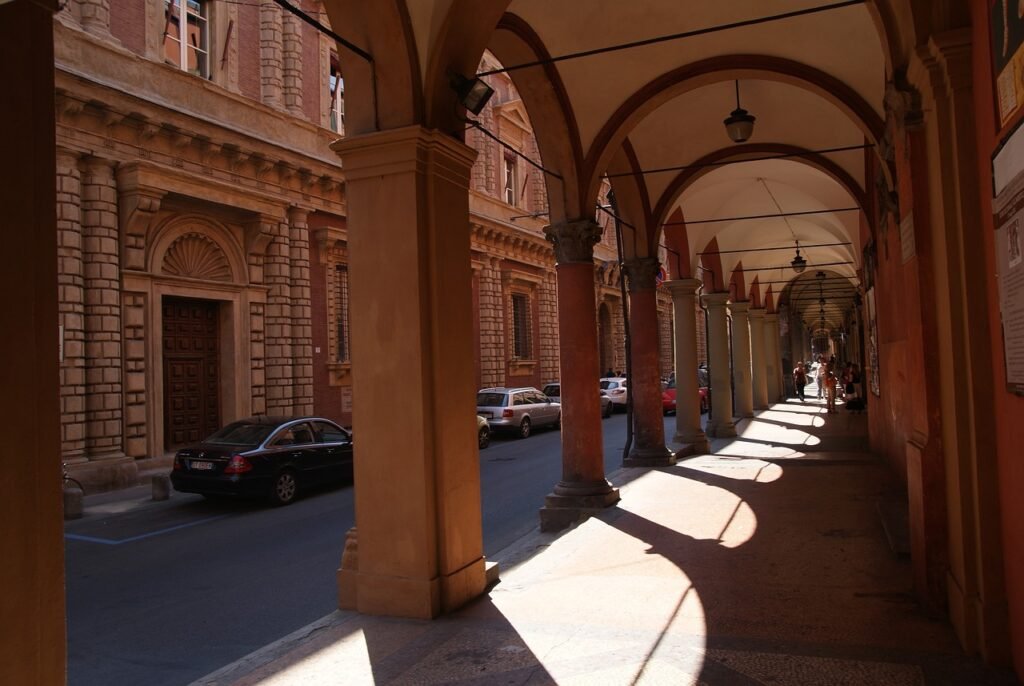
Bologna: Quick Facts
Name in Italian: Bologna
Approximate Population: 814,332
Main Airport(s): Bologna Guglielmo Marconi Airport.
Urban Transport: Bus and taxi.
Genoa: A Harbor of History and Architectural Splendor
Genoa, celebrated as The Port City, has played a pivotal role in maritime history, standing as one of the most significant ports in the Mediterranean for centuries. This illustrious past as a maritime power is intricately woven into the city’s fabric, from its robust sea trade to its naval prowess. Genoa’s port continues to be a bustling hub, connecting Italy with the wider world, and symbolizing the city’s enduring relationship with the sea.
The city’s charm extends to its striking old town, a fascinating maze of narrow alleys (caruggi) that open into picturesque squares, lined with Renaissance and medieval buildings. This area, one of the most extensive old towns in Europe, showcases Genoa’s rich architectural heritage, where grand palaces and ornate churches reflect the city’s former wealth and status. Notable among these is the Via Garibaldi, lined with opulent palazzi that are now UNESCO World Heritage sites.
Adding to Genoa’s maritime legacy is its renowned Aquarium, one of the largest in Europe, offering a deep dive into marine life and oceanic ecosystems. Alongside it, the maritime museum (Galata Museo del Mare) provides a comprehensive exploration of Genoa’s nautical history, from ancient times to the present. Together, they offer a captivating insight into the city’s strong connection to the sea. Genoa, with its rich maritime history, stunning old town, and cultural attractions, stands as a testament to Italy’s diverse urban tapestry, where history and modernity merge seamlessly along the shores of the Mediterranean.
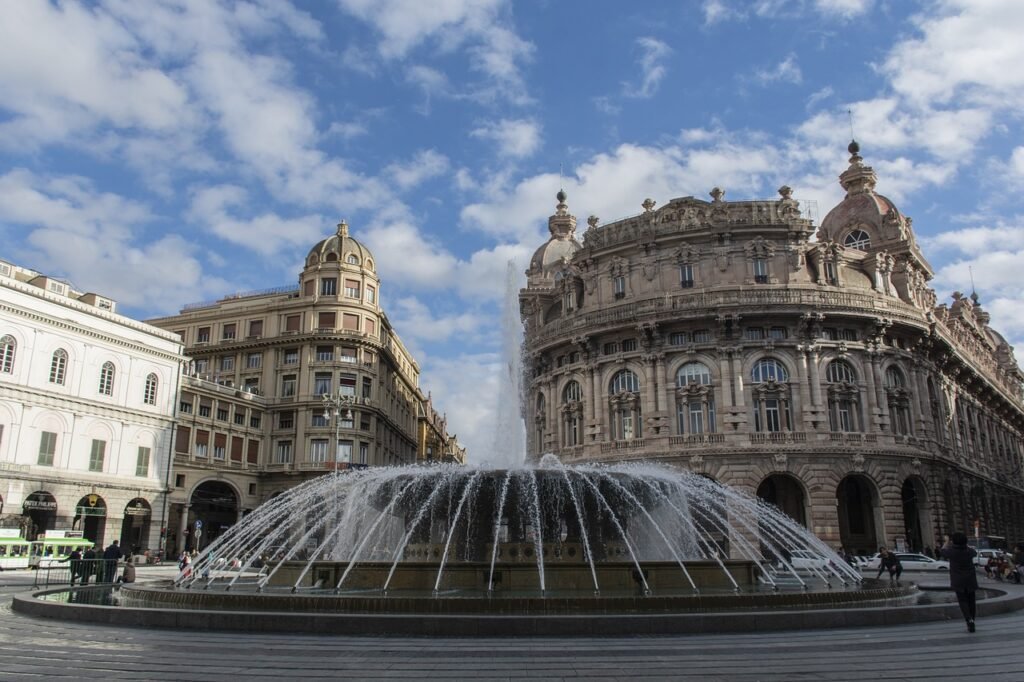
Genoa: Quick Facts
Name in Italian: Genova
Approximate Population: 558,745
Main Airport(s): Genoa Airport (or Genova Airport) also named Christopher Columbus Airport, and commonly known as Aeroporto di Genova-Sestri Ponente.
Urban Transport: Bus, cable car, public elevators, one water-bus line, and a short subway.
Siena: A Timeless Medieval Tapestry and Cultural Beacon
Siena, often celebrated as The Medieval Gem, is a city where time seems to have stood still, preserving its medieval cityscape in remarkable detail. The city’s well-preserved historical center, a UNESCO World Heritage site, offers an authentic glimpse into medieval urban life, with its narrow winding streets, historic buildings, and large piazzas forming a vivid picture of the past. The heart of Siena is the Piazza del Campo, known for its unique shell shape and as the site of the famous Palio horse race. This traditional event, held twice a year, is steeped in history and local pride, showcasing a competitive spirit that dates back centuries.
Siena’s architectural grandeur is exemplified by its Gothic structures, most notably the Siena Cathedral (Duomo di Siena). This stunning cathedral, with its intricate façade and majestic interior, stands as a testament to the city’s artistic and architectural achievements during the Gothic era. The Cathedral’s elaborate design, filled with exquisite artworks and marble floors, is a marvel, embodying the artistic richness of the period.
Siena’s preservation of its medieval character, combined with its vibrant cultural traditions like the Palio, makes it a unique destination. It offers a journey back in time, where visitors can experience the medieval world in its near-original state, enhanced by the city’s ongoing celebration of its historical and cultural legacy. In Siena, the past is not just remembered; it is relived and cherished, making it a true medieval gem in the heart of Tuscany.
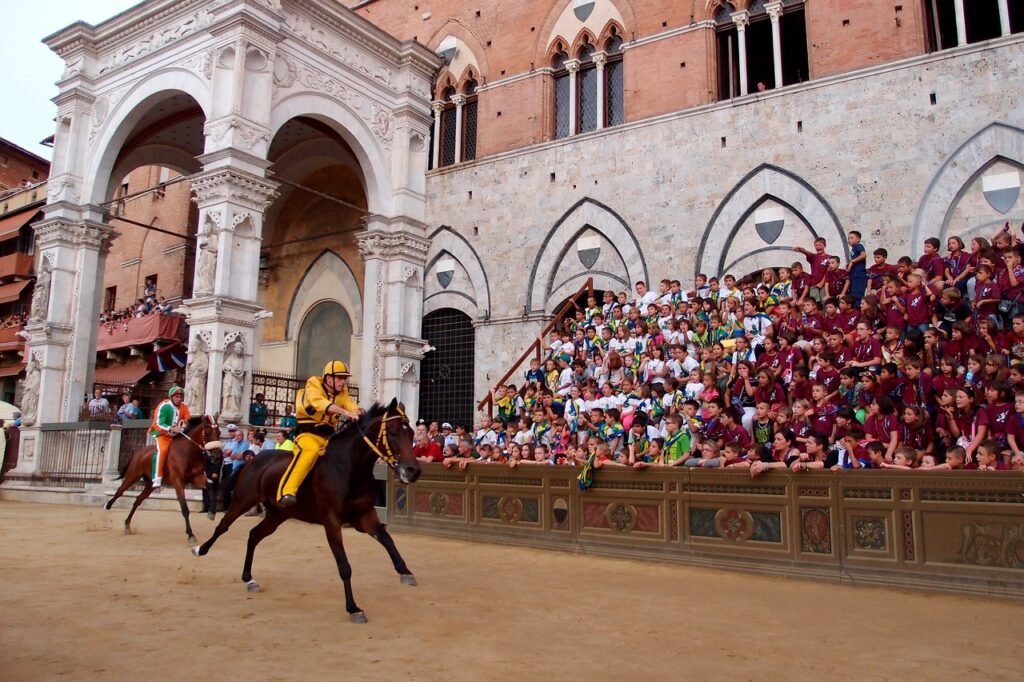
Siena: Quick Facts
Name in Italian: Siena
Approximate Population: 54,123
Main Airport(s): The closest major airport is Florence Airport.
Urban Transport: Bus and taxi.
Italy’s Diverse Urban Tapestry
Italy’s cities offer a unique blend of history, culture, and beauty, from Rome’s ancient wonders to Venice’s canals, and Florence’s art to Milan’s fashion. Each city, including Naples, Turin, Verona, Bologna, Genoa, and Siena, brings its own distinct charm and rich heritage. This journey through Italy’s most beautiful cities is an invitation to explore and appreciate their diverse beauty, cultural richness, and historical depth, making every visit a memorable experience in this magnificent country.
Top Tips – Europe
Use Omio to compare buses versus trains, very useful.
For Hotels including self-catering apartments we use Booking.com, where you can filter by review score and many properties have a pay later/late cancellation policy should your plans suddenly change.
For travel insurance, we use and recommend using Staysure – specialists in over 50’s travel insurance, as we have always found them fair and easy to deal with.
Check our resources page for more budget tips and discounts from our days in transit!
Staying Safe
Travelling in Italy is usually safe but in many major cities petty theft and pickpocketing do occur, especially in crowded tourist spots or busy public transport. So keep your valuables safe and out of sight.
If you have an emergency, dial 112 for assistance.
Of course, the key thing is to have comprehensive travel insurance coverage to protect against, cancellations, theft, illness etc.

